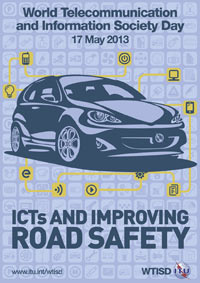THE FUTURE OF ENERGY :
Bloomberg New Energy Finance — Guy Turner, head of economics & commodity
research at Bloomberg New Energy Finance, talks about
investment in renewable energy and how the sector is expected to grow by the year 2030. He speaks on Bloomberg Television’s “The Pulse.”
° Global Renewable Energy Market Outlook 2013 – fact pack
° McCrone: Summit 2013 Discussed How to Avoid Energy’s Extinction Events
To download the full VIP Brief in PDF format,
click here.
Are you a mammal? Well, you clearly are – in a biological sense. And
if you got as far as reading this article, the chances are that you are
also a mammal in the metaphorical sense that I am about to describe.
At the sixth Bloomberg New Energy Finance Summit in New York last
week, our chief executive, Michael Liebreich, showed in his keynote a
slide that likened the old way of doing things in energy – centralised
and relatively inflexible grids, a small number of multi-GW power
stations, national or regional energy systems, a shortage of data on the
patterns of energy use, and a lack of consumer choice – to a
Tyrannosaurus Rex.
Below I discuss the Summit’s main messages for efficiency, renewable
energy and gas – but first, more on the link between paleontology and
energy. Dinosaurs like the T-Rex did have their day of dominance, but –
in what is now known as the Cretaceous-Paleogene Extinction Event, some
66 million years ago – were wiped out by their failure to adapt to a
sudden and catastrophic change in the environment.
After that Extinction Event, the mammals – small, fast-breeding,
flexible, able to work in groups – proved resilient and took over the
world. Many of their species perished, of course, but enough survived to
set forth, multiply and evolve into more and more specialist niches
over the ensuing tens of millions of years.
In energy, there may not be one single extinction event coming, but a
combination of events appears poised to bring change. Energy systems
need to be resilient in the face of natural disasters, terrorism and
cyber-attack, climate change and technological upheaval. Instead the big
systems are often found wanting. The Summit heard, for instance, how
Superstorm Sandy last November resulted in a loss of power for some
8-10m people in the US, but also how a combined-heat-and-power unit at
New York University kept the lights on there, and how New Jersey’s
12,000 solar systems survived intact.
THE QUEST FOR “ROI”
The main theme of the 22-24 April Summit was “ROI” – resilience,
optionality and intelligence. The concept, introduced by Michael in this
column in February, struck chords not just with clean energy fans at
the event, but also with a wider constituency. Resilience is the ability
of an energy system to cope with natural disasters, environmental
change and security threats; optionality is the ability to adjust to
rapid technological change, shifts in energy costs and patterns of
consumption; intelligence is the ability to identify sudden shifts in
supply and demand, and come up with answers.
Peter Evans, director of global strategy and analytics at General
Electric, told the Summit that there were 400 natural disasters per year
in the 1980s, but that this had risen to 900 per year in the last three
years. After decades of urbanisation, 60% of the planet’s major cities
are now vulnerable to natural disasters. Water is another issue – he
said that there were 26,000 energy installations, using water for
cooling, in areas of the world facing medium to high water stress.
The entrenched electricity system is also grossly inefficient. David
Crane, president of NRG Energy, said that the US power plant fleet runs
at a 43% capacity factor, “because it has to be able to meet peak demand
in the summer”. He said that the US electricity network is essentially a
system established in the 1930s with “one hundred and thirty million
wooden poles”. “Our energy system is very much a command-and-control,
centralised system. In the future, we see that command and control
happening in the home,” he added.
The Summit made clear that ROI is not necessarily all bad for
conventional energy, or all good for renewable energy – although it is
all positive for energy efficiency. Distributed solar was a technology
cited by many speakers as one set to grow strongly in importance,
offering improving cost-competitiveness but also reducing the
vulnerability of countries’ electricity systems.
Jon Wellinghoff, chairman of the Federal Energy Regulatory
Commission, said that he was seeing increases in US solar photovoltaic
usage of 40% a year, much to the discomfort of utilities. He added: “A
more distributed system is much more resilient, whether it is using
cogeneration, or CHP, or distributed PV.”
Developing countries are increasingly looking for an energy mix that
will enhance resilience. Jorge Bunster Betteley, energy minister for
Chile, told the gathering in New York that his country switched from a
hydro-heavy power system years ago to one dependent on natural gas
imports. After 2006, however, crisis in Argentina meant Chile had to
turn to LNG imports at much higher cost to keep the power stations
running. It is now going plural –”developing very strongly biomass and
wind”. South Africa’s energy minister, Dipuo Peters, cited an even wider
mix, of coal, nuclear, wind, solar, smart grid and decentralised
distribution, as her country’s blueprint. And there is a special variant
of the resilience motive for South Africa – it is participating in the
proposed 40GW Grand Inga hydro project in Congo partly to avoid “South
Africa being lit up and the rest of the continent being dark. We would
then have challenges because everyone would want to go there,” she said.
EFFICIENCY ON THE UP
Energy efficiency appears finally to be moving from the clichéd
“low-hanging fruit” that never gets harvested, to one with firm
political and entrepreneurial momentum behind it. The North America
dialogue session at the Summit heard Jeffrey Holmstead, partner at
Bracewell & Giuliani and former official at the Environmental
Protection Agency, report that the new Congress is looking for more
cooperation on energy than the last. “I think we can expect modest
moves, for instance on energy efficiency.”
Daniel Poneman, acting US secretary for energy, was forthright in his
support, saying that the “cheapest megawatt is the one you don’t have
to build” and that, while 100% efficiency was not attainable, “we must
do better than 45%.”
There were striking examples of entrepreneurial effort. Tony Fadell,
formerly a designer of the iPod and now founder and chief executive of
Nest, told us how his company’s intelligent thermostat “learns your
behaviour patterns and manages energy appropriately”. He said that it
can also challenge consumers to do more – for instance, with the
customer’s permission of course, slowly increasing the house’s summer
temperature by a degree over three weeks, in the hope of achieving 5-10%
savings without the occupants even noticing the difference.
And among Bloomberg New Energy Finance’s Pioneers – 10 young
companies selected from more than 200 entrants for their potential
growth – there were several efficiency-oriented firms. One, Advantix
Systems of Florida, is exploring the use of liquid desiccants to reduce
energy consumption in heating, ventilation and air-conditioning systems
by 30-50 percent, while another, BuildingIQ of California, provides
energy management software to adjust predictively HVAC settings in
commercial buildings.
FUTURE FOR RENEWABLES
The battle to limit carbon emissions continued to loom large with
many speakers at the Summit – including United Nations secretary-general
Ban Ki-Moon, who noted that the band of climate sceptics is “shrinking
by the day” and promised to engage with private and public financial
institutions over “the coming month” to try to mobilise additional
capital for mitigation projects.
However it is far from plain sailing for renewables. The damage done
to wind and solar investment in Europe by the retroactive subsidy cuts,
introduced first by Spain, had been transmitted like a virus through
other southern and eastern European countries, according to Riccardo
Puliti, managing director of energy at the European Bank for
Reconstruction and Development. He predicted that the EBRD would be
lending just EUR 50m to European renewables this year – compared to an
average of some EUR 600m in recent years. On the same tack, Akio Fukui,
chairman of Mitsubishi Power Systems Europe, commented that it was now
easier to raise finance for a renewable energy project in Latin America,
South Africa or Japan than it was in Europe.
However, real hope emerged in New York last week that enough
bipartisan support could be assembled to extend Master Limited
Partnership structures, long available for oil and gas investments, to
renewable energy projects too. Senator Lisa Murkowski, the ranking
Republican on the Senate Energy and Natural Resources Committee, told
Summit attendees that she supports such legislation, and the next day
American Petroleum Institute chief executive Jack Gerard told attendees
that the oil industry actually supports the idea. Such a move from his
powerful lobby could provide the cover that oil state members of
Congress need to support an extension of MLPs to renewables.
There were also further hints that the long-awaited arrival of
long-term institutional money into the ownership of renewable energy
assets may be gathering pace. Senior financiers at the Summit talked of
“investment yield vehicles” designed especially to make it feasible for
pension and insurance funds to invest without having to wise up on the
nitty-gritty of wind and solar. The Greencoat Wind initial public
offering in the UK has been a small step in this direction this spring,
and in the US, Bloomberg News reported last week that power generator
AES and private equity firm Riverstone plan to raise $171m on the
Toronto Stock Exchange via a vehicle known as Silver Ridge. This is a
portfolio of solar projects that will eventually consist of 522MW.
Bloomberg New Energy Finance’s latest forecast, known as
GREMO (Global Renewable Energy Market Outlook) is encouraging for renewable
energy, whichever of its three scenarios you choose for the evolution of
world energy markets. Published on the first day of the Summit, GREMO
sees renewables accounting for between 69% and 74% of all new power
capacity added between now and 2030 (see chart), driven by remorseless
cost reductions for wind and particularly solar technology and –
ironically perhaps – by the impact of low carbon prices and the meagre
expected profitability of gas-fired plants. The latter factors make it
unattractive for countries outside the US to switch from coal to new gas
capacity, and more attractive to plump straight for renewables.
Both Summit speakers and our own GREMO forecast envisage an energy
world that will remain highly divergent for many years to come. Gas
prices will stay very different across the continents, despite the
efforts of an enlarged fleet of LNG carriers. Speakers in the Summit’s
gas panel session, including David Khemakhem, corporate strategic
planning advisor at Exxon Mobil, and Gordon Shearer, chief executive of
Hess LNG, argued that the runaway US success at exploiting shale gas may
take some considerable time to be replicated elsewhere, because other
countries will have to build up data, skills training and a service
company infrastructure – and some may be held up by property rights that
give landowners little incentive to allow drilling.
What all countries will increasingly have in common, however, is the
imperative to reduce risk and improve options by making sure that their
energy policy-makers and utilities, in the words of former Colorado
Governor Bob Ritter, “do not put all their eggs in one basket”.
Come to think of it, the vulnerability of their eggs probably
contributed to the undoing of the dinosaurs. Mammals, as we know, have a
different system.
To read excerpts from the Summit blog, see
https://www.rebelmouse.com/BloombergNEF/
The future of renewable energy as scientists look to cheaply create a new, non-food ethanol bio-fuel.
° Harry Boyle, lead analyst at Bloomberg New Energy Finance, discusses
The future of renewable energy as scientists look to cheaply create a new, non-food ethanol bio-fuel. He speaks on Bloomberg Television’s “The
Pulse.”



















